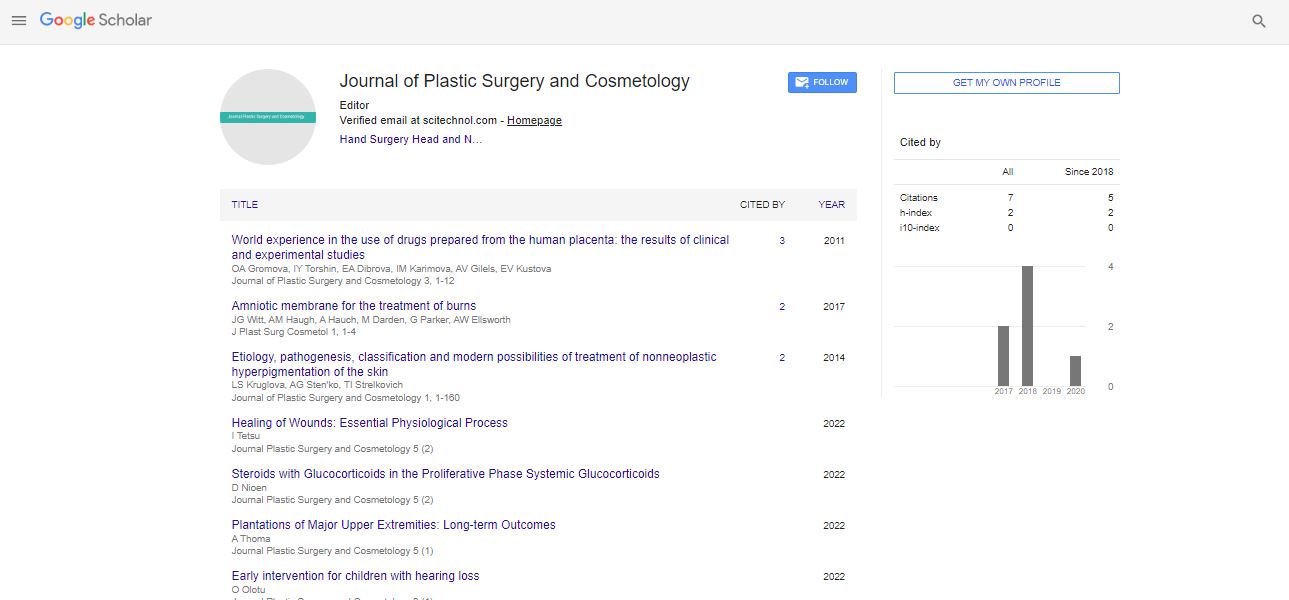Hirudotherapy for limb ischemia in the pediatric intensive care unit: A retrospective observational cohort
Joseph C. Resch, Rachel Hedstrom, Marie E. Steiner, Sameh M. Said and Arif Somani
University of Minnesota Mason Children’s Hospital, USA
: J Plast Surg Cosmetol
Abstract
Background: Distal limb ischemia may be a complication of extracorporeal membrane oxygenation (ECMO), disordered coagulation, and microvascular malperfusion that may be refractory to initial therapies. Medicinal leech therapy (hirudotherapy) has been attempted in plastic and orthopedic surgeries to improve venous congestion in ischemic flaps; however there is limited information on use related to ischemia secondary to arterial malperfusion. We present a cohort of children from an intensive care unit (ICU) with distal limb ischemia in which leech therapy was attempted in order to elucidate its use and outcomes. Method: The University of Minnesota Masonic Children’s patient database (2012 – 2021) was queried to identify any available pediatric patients (<18 years) who have received hirudotherapy in the pediatric ICU. Patient charts were evaluated systematically to collect demographic indices, primary disease variables, coagulative status, vascular access, vasoactive medication dosing, measures of bleeding, limb and mortality outcomes and details on leech use. Data was evaluated to identify trends or suspected impact on outcomes. Results: Hirudotherapy was used in 7 patients for limb ischemia (age: newborn – 17 years), 5 with congenital heart disease, and 2 others with viral septic shock. Time to leech application following recognition of ischemia ranged 1-6 days (ave. 3), with duration of use ranging 1-10 days (ave. 3.9). Average leeches used per day was 3.5 (max 10), which in all but 1 patient required discontinuation due to significant bleeding or death. Time to leech detachment was indeterminant. Mortality rate was 57%, all secondary to multiorgan failure. In 3 surviving patients: 5 limbs had leeches applied and 4 of these resulted in at minimum partial amputation (including autoamputation). One patient had a new microbe identified following leech therapy (Rizopus fungi). Of the 2 patients with highest bleeding and blood product requirement, neither appear to have specific trends to coagulative or leech variables. Similarly, there was no specific trend in coagulative or leech variables for the lone salvaged limb. Vasoactive-inotropic score (VIS) tended higher prior to leech application, suggesting a vasoconstrictive pathway for arterial malperfusion. Blood loss predictably increased with leech application, as did total blood product requirements, which appeared to persist in the post-leech phase in some patients. Conclusion: This case series establishes baseline data for use of hirudotherapy in limb ischemia caused by arterial malperfusion. Caution is required due to predictable increase in blood loss and total blood product requirement, however resultant digit and limb salvage was disappointingly poor. No specific identifiers were found which improved limb outcome or worsened bleeding variables. More data is needed to identify predictive indices for limb outcome, and successful, safe hirudotherapy use.
 Spanish
Spanish  Chinese
Chinese  Russian
Russian  German
German  French
French  Japanese
Japanese  Portuguese
Portuguese  Hindi
Hindi 